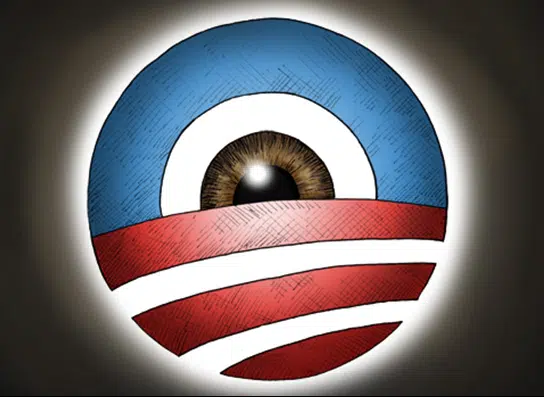By Robert Romano — On Nov. 16, the national debt surpassed $15 trillion for the first time in U.S. history to $15.026 trillion. And at its current trajectory, it will pass 100 percent of the $15.198 trillion Gross Domestic Product by the end of the year, if not early in 2012.
That’s problematic, because as gross debt service payments rise over the next ten years, they will become a greater and greater burden on the overall economy. Government borrowing therefore becomes a drain on economic output.
For example, right now, gross annual interest payments on the national debt stand at $430 billion at an effective rate of about 3 percent. But over the next ten years, the national debt is projected to stand at $26 trillion by 2021. If interest rates were to normalize to 5 percent, payments would rise to a gargantuan $1.3 trillion.
That alone explains why the Federal Reserve has been so heavily involved with government debt markets since the financial crisis struck. Since the housing bubble popped in August 2007, the Fed’s stake in U.S. treasuries has risen from $790 billion to $1.67 trillion today. By bidding into these markets, they can keep rates down.
More recently, the Fed has been dumping short-term debt and purchasing long-term issues in an effort to keep long-term interest rates down, dubbed Operation Twist.
So, just to keep interest rates at manageable levels at, say, 3 percent, the nation’s central bank is forced to print more and more money just to service the debt. This in turn has an inflationary impact, which too drains economic output as the prices of goods and services rise, hurting consumers.
This contrasts with the European Central Bank (ECB), which cannot monetize the debts of troubled sovereigns across the pond to any extent without violating Article 123 of the Lisbon Treaty. In the crisis, the ECB has but just €183 billion of European debt, even though the consolidated debts of Portugal, Ireland, Italy, Greece, and Spain (PIIGS) totals more than €3 trillion.
Keeping with its price stability mandate, every time it makes purchases, it removes a commensurate amount of money from the banking system. For that reason, Rabobank economist Elwin de Groot has warned the ECB has a “natural limit” of €300 billion in debt it can take on.
So, because the ECB cannot intervene on a wide scale, Italian ten-year bonds are hovering near the danger zone of 7 percent, as are Spain’s. Greek one-year bonds have risen to over 260 percent, and ten-years are at over 28 percent. Portuguese ten-years are over 11 percent. Irish ten-years are over 8 percent.
That is not to advise that Europe’s salvation is to simply print money on an unprecedented scale to drive down interest rates for every single country in the Eurozone. Quite the opposite.
It is to suggest that once gross debt has reached such exorbitant levels that private funding markets cannot sustain the amount of borrowing needed by governments at affordable interest rates, it’s time to stop borrowing. Printing money will fuel inflation and sink the global economy further.
Instead, it’s time to balance the budget, in Europe, and here in America. The U.S. has the largest debt in the entire world, and we have to figure out a way to pay it down.
We also have to figure how to do so in such a way that itself will not become a drain on economic output. That is why a balanced budget and debt repayment needs to be accompanied by broad-based tax reform that will lower rates plus removing restrictive regulations in order to jumpstart economic growth.
Yet none of these proposals are on the table either in Europe or the U.S. Which means that over the next ten years, the gross debts of the Western world will surpass and soon dwarf the size of their respective economies. We need to knock off this borrowing binge before it is too late.
Robert Romano is the Senior Editor of Americans for Limited Government.







